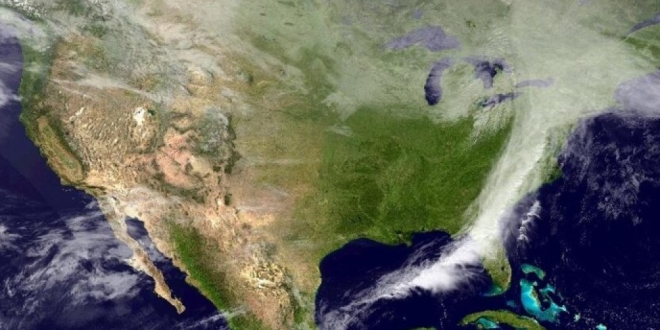Information from America’s most progressive atmosphere observing framework demonstrates the U.S. has experienced a cooling pattern in the course of the most recent decade, in spite of late claims by government researchers that warming has quickened worldwide amid that time.
The U.S. Atmosphere Reference Network was created by the National Oceanic and Atmospheric Administration to give “brilliant” atmosphere information. The system comprises of 114 stations over the U.S. in ranges NOAA expects no improvement for the following 50 to 100 years.
The atmosphere stations utilize three free estimations of temperature and precipitation to give “progression of record and upkeep of all around balanced and profoundly precise perceptions,” NOAA states on its site. “The stations are put in unblemished situations anticipated that would be free of advancement for a long time.” generally, NOAA picked areas so they don’t should be balanced for “predispositions” in the temperature record.
Obviously, an “interruption” or “break” exists in this most unblemished atmosphere information,” composes Anthony Watts, a veteran meteorologist and distributer of the science blog Watts Up With That. “Truth be told, an extremely slight cooling pattern shows up.”
Watts’ plotting of U.S. Surface Climate Observing Reference Networks information comes after NOAA scientists put out a study asserting there’s been no “break” in worldwide warming– a 15-year period with no noteworthy ascent on the planet’s normal temperature. Fundamentally, NOAA made changes in accordance with climate stations, floats and boats that expanded the warming pattern from more seasoned information.
“Recently amended and upgraded worldwide surface temperature information from NOAA’s [National Centers for Environmental Information] don’t bolster the idea of an unnatural weather change ‘break‘,” NOAA researchers wrote in their study.
NOAA found that from 1998 to 2012 there was “more than twice as much warming as the old examination at the worldwide scale,” at 0.086 degrees Celsius every decade contrasted with 0.039 degrees for each decade.
“This is unmistakably inferable from the new investigation, which itself has much higher patterns,” researchers composed. “Interestingly, slants in the new investigation are just somewhat higher.”
NOAA’s most recent atmosphere alterations were pointedly scrutinized by atmosphere researchers doubtful of man-made an Earth-wide temperature boost. Doubters contended NOAA’s information modification were generally outlandish and prohibited information that didn’t fit with the a dangerous atmospheric devation account.
“My primary concern appraisal is this,” composed Dr. Judith Curry, an atmosphere researcher at Georgia Tech. “I believe that instabilities in worldwide surface temperature peculiarities is considerably downplayed.”
“The worldwide surface temperature datasets are unmistakably a moving target,” Curry included. “So while I’m certain this most recent investigation from NOAA will be viewed as politically helpful for the Obama organization, I don’t see it as an especially valuable commitment to our logical comprehension of what is going on.”
What’s intriguing about the USCRN information is that it was made to give researchers “long haul economical and hearty atmosphere perceptions that are important to record long haul environmental change patterns for the United States,” as per NOAA. A lot of this depends on the way that these atmosphere stations are put in territories that don’t should be balanced for impedance, as urban warmth made in urban areas.
NOAA’s most recent temperature redesign did exclude USCRN information. One explanation behind this may be that the USCRN stations just have around 10 years of information on them, which could be considered too shy of a period to utilize them in their examination.
It ought to additionally be noticed that USCRN just covers the U.S., including Hawaii and Alaska, yet whatever remains of the world does not have these amazing climate stations that don’t oblige temperatures to experience ex post facto changes by NOAA.
Doubters, in any case, contend that USCRN information could flatten future contentions of fast warming made by NOAA and others.
“Along these lines, since this best in class system obliges no alteration, we can most without a doubt believe the information displayed by it. Right?” Watts inquired.
“While we rarely if at any point see the USCRN specified in NOAA’s month to month and yearly ‘Condition of the Climate’ reports to the U.S. open, covered in the profundities of the site, one can become acquainted with the information and have it plotted,” Watts included. “We now have 10 years, 10 years, of good information from this system and we have the capacity to plot it.






